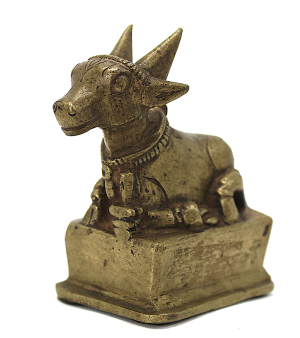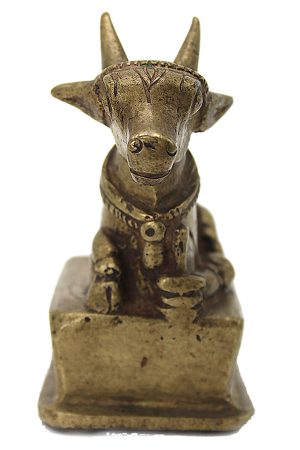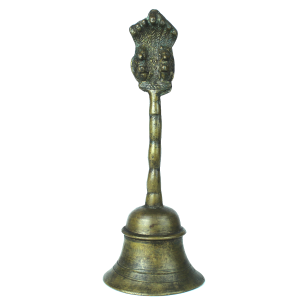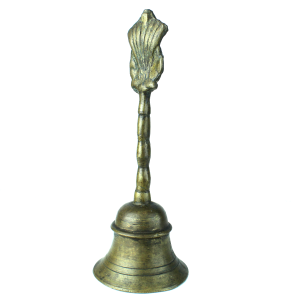-


$155.00
Nandi is among the most frequent Hindu deities worshiped in public places, temples, homes, or on a home altar throughout India. As one of Hinduism’s mythical animals, Nandi is Shiva’s vahana, (his mount that transports him), attendant and leader of his attendants and guardian of all four-footed animals. A recumbent image of Nandi on a…
-


$295.00
H: 10” Dia: 3.75” | FREE SHIPPING within Continental U.S.!
This Hindu prayer bell was likely placed on a home or temple altar and used in daily puja rituals. It has a smooth and undecorated body with only incised parallel rings circling plain surfaces and is topped by a Garuda pair sheltered by Naga hoods. Garuda, Vishnu’s mythical winged bird mount, and Naga, a seven-headed hooded serpent, are natural enemies but when they are represented together, they symbolizes peace, a very appropriate adornment for the tranquility and serenity elicited by the pleasing sounds of a prayer bell.
End of content
End of content




